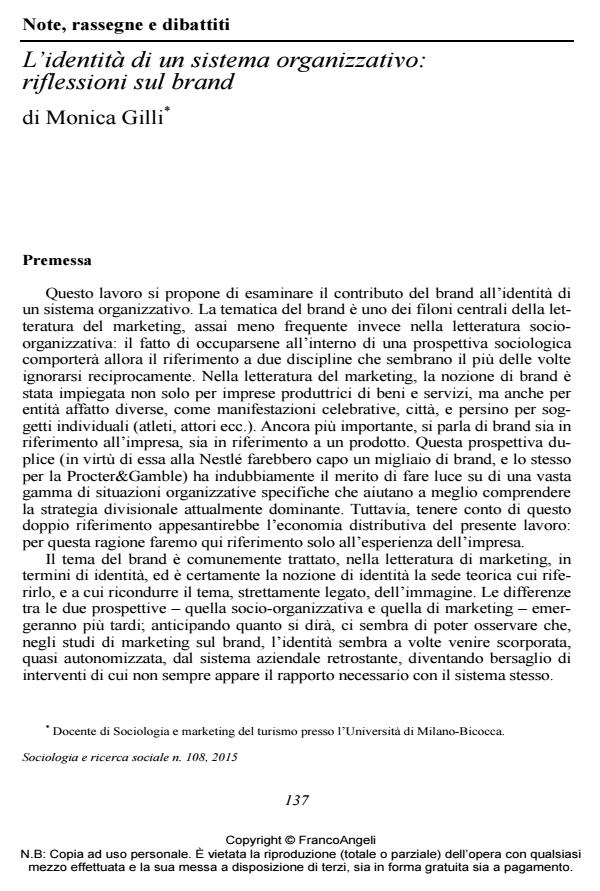Identity of an Organizational System: Reflections on Brands)
Journal title SOCIOLOGIA E RICERCA SOCIALE
Author/s Monica Gilli
Publishing Year 2016 Issue 2015/108
Language Italian Pages 19 P. 137-155 File size 101 KB
DOI 10.3280/SR2015-108007
DOI is like a bar code for intellectual property: to have more infomation
click here
Below, you can see the article first page
If you want to buy this article in PDF format, you can do it, following the instructions to buy download credits

FrancoAngeli is member of Publishers International Linking Association, Inc (PILA), a not-for-profit association which run the CrossRef service enabling links to and from online scholarly content.
Although branding initiatives can be a decisive factor in the success of a business, the subject is treated more often in marketing literature than in that of organizational sociology. This paper aims to establish the importance of brands for organizational identity, and to review differences between the two literatures. Brands are a powerful creator of organizational identity: they can create a feeling of security, trust, loyalty, and even a sense of belonging, going beyond the initial terms of the economic relationship, and giving the company an almost «human» identity. Of course, any branding initiative has to deal with the company’s culture, which is crucial in building its identity, both internally and externally. Acting on the culture, however, is not as simple as some marketing literature would seem to suggest. First of all, culture is not monolithic: values, norms and practices may be different, and often contradictory. It is therefore difficult to outline a brand that «represents» the entire company. Secondly, the company is an adaptive system, and therefore its culture involves not only adapting to the New but also preserving the Old, in other words, the collective practices, the sense of self, and continuity. Any branding initiative should be consistent with the cultural tradition of the organization to prevent uneasiness, avoid being overwhelmed by change, and having the company’s identity threatened
Monica Gilli, L’identità di un sistema organizzativo: riflessioni sul brand in "SOCIOLOGIA E RICERCA SOCIALE " 108/2015, pp 137-155, DOI: 10.3280/SR2015-108007